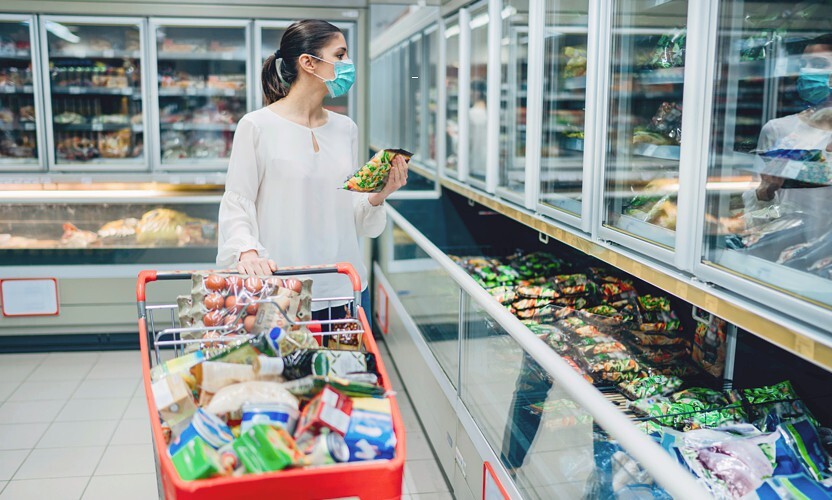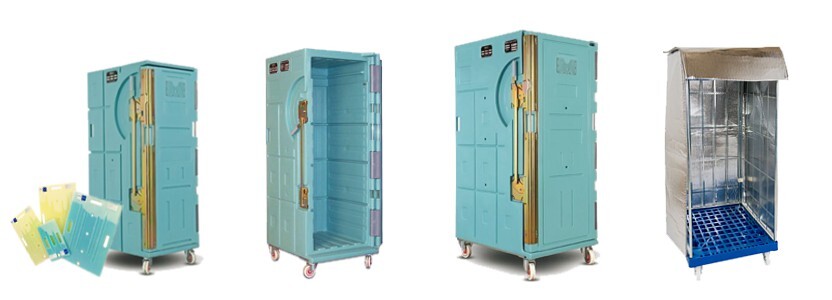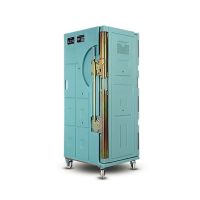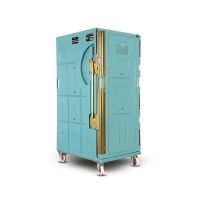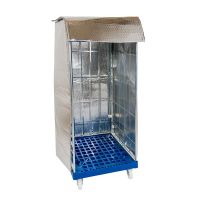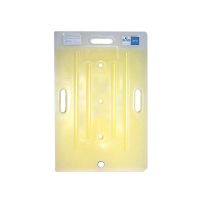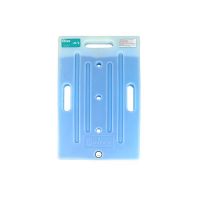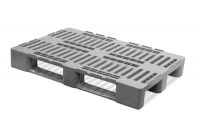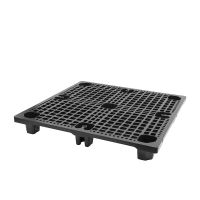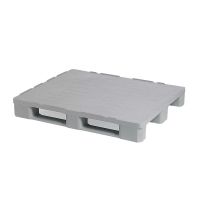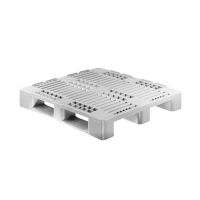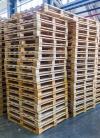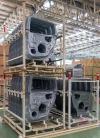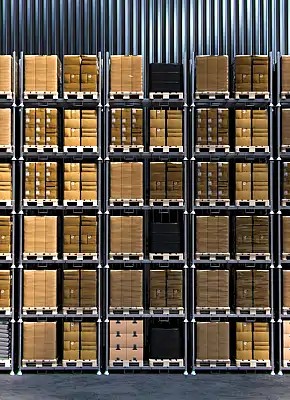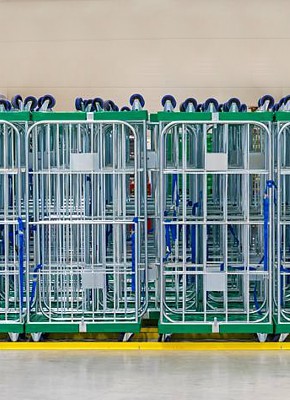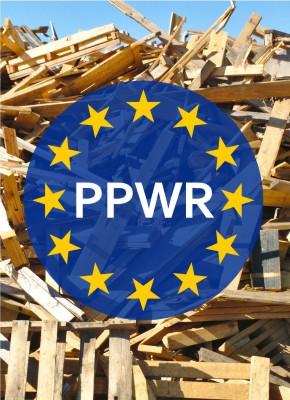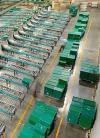At the beginning of the pandemic it became clear very quickly that maintaining cold chains is a priority. Producers and distributors committed themselves to maintaining an uninterrupted food supply chain. The focus was then on how the cold chain would also be used to successfully deliver temperature-sensitive COVID vaccines to 19 billion people worldwide once the products were ready.
It means that a properly optimised cold chain is an essential part of the modern economy. What is its phenomenon and what tools can be used to best organise the cold chain?
1. Cooling chain - what is it?
As the name suggests, the cold chain is the process of managing the logistics of products that require refrigerated temperatures adapted to product requirements. This involves carrying out many tasks for the preparation, storage and transport of refrigerated products. The logistics chain must provide uninterrupted cooling during storage and distribution in order to maintain the high quality of products. An efficient cold chain ensures that temperature-sensitive products are kept within optimal temperature ranges and maintain a high quality at all times during transport and storage
.
2. When can the cold chain be broken?
The problem with cold chain logistics is that it is complex and it can be difficult to provide adequate cooling from the loading ramp to the destination. For any product, a simple error such as too long a loading or unloading time of the product can raise the temperature and damage the goods in the cold chain, wasting money spent on preparing and transporting the products. According to the Council for the Protection of Natural Resources, "one in seven lorries of perishable goods delivered to supermarkets are thrown away".
"Industry consultants estimate that up to one in seven lorries of perishable goods delivered to supermarkets are being thrown away" members of Natural Resources Defense Council
What's more, failure to maintain the right temperature can result in unintentional exposure of customers to hazards resulting from the consumption of non-stable medicines or food. Thus, mistakes in the management of the cold chain endanger profits and even lives. Loss of temperature control during transport can potentially disqualify valuable shipments and leave you with damaged goods and unhappy customers.
Food and pharmaceutical suppliers rely heavily on the cold chain to ensure that the shipment arrives in perfect condition for sale.
3. How does the whole food cold chain run?
The refrigeration chain begins with the products being stored in a cold store, then through appropriate packaging and safe transport, it ends on the shop shelf. Many companies focus on their core business, i.e. production and increasingly entrusting their cold chain operations to external partners with appropriate reusable equipment.
4. Packaging used in food cooling
The most common packaging material used in cold chain logistics is disposable packaging with a cooling element (dry ice). However, due to the insulation material used together with dry ice, it is quite an expensive solution. Compared to normal logistics, in cold chain logistics the return on investment is much faster if reusable packaging is used. Some of the typical refrigeration equipment is different types of refrigerated containers, compartments and roll containers.
Isothermal containers transport food in perfect condition
Rolling containers are specialised roll containers used for transporting food products at the right temperature. They are the basis of cold chains for transporting food from distribution centres to points of sale.
The insulating properties of the refrigerated container protect it from heating up or overfreezing. The container has a casing with EPDM (Ethylene propylene diene monomer [rubber]), which is made of one type of extruded plastic, so it is easy to clean and remains hygienic. The EPDM casing provides the possibility of working in a wide range of temperatures and resistance.
How to keep the temperature in the refrigerated container constant?
To extend the storage time and adapt it to the transport time, it is necessary to cool the interior of the isothermal roll container. This can be achieved by using factors such as cooling or freezing inserts, dry ice or special gas. This ensures that the temperature of the food remains stable and does not heat up or cool down during transport.
The most important feature of a professional insulated transport container is its ability to maintain temperature in any situation. After loading and closing the door refrigerated roll container maintains the temperature for a predetermined period of time, including not only transport time but also waiting for unloading.
Upon arrival at the shop, isothermal roll containers are emptied directly into the refrigerated display cases. The point of sale does not need a special cold store for the goods received, because regardless of the delivery time, the insulated container maintains the appropriate temperature of the products to the end. The temperature is also maintained by e.g. a special cooling inserts, which can maintain temperatures as low as -21 ºC! These are special products with a passive cooling system in which the cooling effect is created by extracting energy from the environment and their operating time depends on the environment and the insulation value of the device in which they are used.
If we do not have to strictly observe the appropriate heat window, but only want to protect our goods from excessive heating or freezing, it is worth using a special isothermal cover made of high quality silver PES foil as additional protection for a standard roller container, covered with 3mm thick airbag foil. Two zips at the front of the cover make it easy to put on and take off the goods in the container without having to take the cover off completely. In addition to its insulating value, this cover protects the transported or stored goods from external contamination.
Benefits of isothermal roll containers
Isothermal containers have many applications and offer many advantages in the logistics chain
-
You can transport food in an ordinary truck
Isothermal food roll containers are approved for professional transport, as are refrigerated trucks, so a normal truck is sufficient to transport sensitive food products.
-
You may group foods at different temperatures and store in the same vehicle
For example, products chilled and frozen in a refrigerated container can be stored freely, but dry foodstuffs that are not exposed to moisture from the refrigeration system can also be transported in the same transport.
The refrigerated container is a guarantee of safe transport
Isothermal rollers ensure optimal temperature also during loading and unloading, which can be very important during hot days.
5. Pharmaceutical refrigeration chain
The distribution of cooled products in the pharmaceutical industry is a major challenge, as more and more products are temperature-sensitive, including:
- vaccinations,
- non-stable blood products,
- biotechnological products,
Every second drug placed on the market is sensitive to temperature. Temperature fluctuations during storage can make them ineffective or even dangerous.
Both heat and cold can affect temperature-sensitive health products for humans and animals. Therefore the cold chain should keep the temperature of the product constant and avoid situations where the specified temperature range is not exceeded.
At present, we use insulated roll containers for our customers, including pharmaceutical companies that produce drugs and require specific storage temperatures. All refrigerated containers in our range meet the thermal and hygienic requirements of the pharmaceutical industry. They are easy to clean and disinfect.
However, appropriate isothermal containers are not everything. When talking about the cold chain in sensitive sectors such as food and medical, it is worth mentioning plastic pallets as the primary load carrier.
6. How do plastic pallets work in the cold chain?
Plastic pallets have many advantages, but one of the biggest is the fact that plastic is a material that does not absorb micro-organisms by itself , helping to prevent contamination in the cold chain by bacteria and fungi.
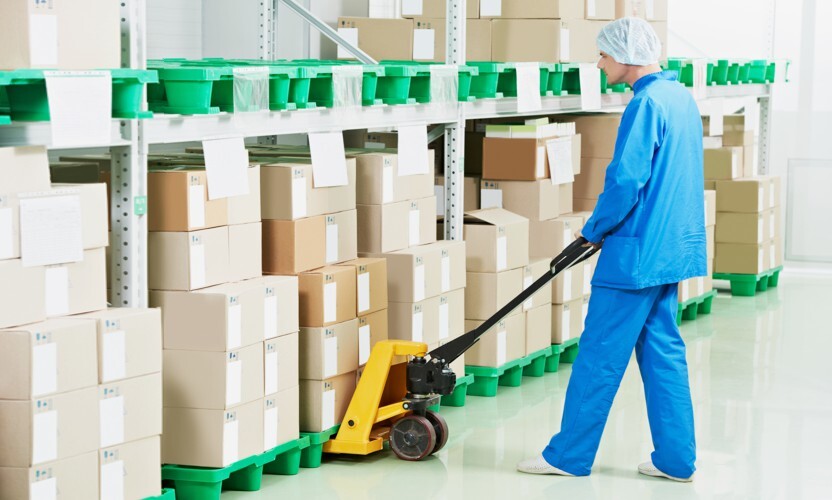
What's more, the material for the production of hygiene pallets is clear HDPE, which offers solutions for many areas of the food and pharmaceutical industry - from very sensitive clean rooms to production lines and applications for shipping goods. It also has several other advantages when used in cold chains.
Ease to disinfect
As a non-porous material, plastic is naturally hygienic and cleaning pallets after use is easy and does not require the use of aggressive chemicals. This is an important feature when there is a risk that the chemicals used to disinfect the pallets may contaminate the product.
One example of an easy-to-clean pallet is the 1 1200x800mm plastic pallet suitable for clean rooms. The completely closed upper deck of the pallet not only sets new quality standards, but also makes it easier to keep it clean, making it free of contamination. What is more, it is suitable for transporting and storing heavy loads because its static load capacity is up to 7500kg!
Durability
High quality plastic pallets are extremely durable and can work for up to 7-8 years. The durability of the pallet means that the product will serve for a long time, will not be damaged quickly and thanks to its strong plastic construction it does not require repair or regular maintenance. The plastic does not wear off over time, so you can use it for many years. This helps you to maximise your cold chain logistics budget instead of buying new pallets every few months.
Lower weight of plastic pallets
Less weight of plastic also saves money for pharmaceutical and food companies. Less weight means lower fuel costs and optimised loads, where most of the weight of the load is product. An independent study has shown that the savings resulting from only sending more products on one load are £0.53 - £0.77 PLN per pallet.
These unique properties of plastic pallets help to prevent product losses in cold chain logistics due to all kinds of contamination. As a result, the use of plastic pallets can help to prevent illness and protect the company's profit and reputation in terms of quality.
Companies can further reduce their operating costs by focusing on the plastic pallet circulation process, i.e. pooling as a way to manage return packaging.
7. Rental of reusable packaging ideal solution in the cold chain
The transition to returnable packaging can involve challenges such as returnable packaging management and long-term investments. But at the same time you will clearly see the cost-effectiveness of these solutions compared to disposable packaging.
In the food and pharmaceutical industry, a frequently rented pallet is the H1 plastic pallet 1200x800x160mm with special allocation rings that secure the movement of stored Euro containers. It meets the increased hygienic standards and is currently the standard used for export and dispatch outside the EU countries.
What do you get by renting pallets, containers or isothermal containers?
You don't have to invest in returnable packaging when you don't need it all the time. Renting pallets, plastic containers or isothermal containers is a convenient solution when you have sudden production stops or order peaks.
You will receive the products you need very quickly. What's more, after the season you don't have to store these packages at home when you don't use them, we pick them up at the time you tell us. Renting packaging means that you do not have to struggle with the lack of logistical means to cause downtime in production or the supply chain. Nor do you incur unnecessary storage and maintenance costs when packaging is not in use. So start the process today!
If you have any questions about products that are used in your industry and meet high hygiene standards, contact us. We will help you to maintain a high quality supply chain from production to the end customer.


